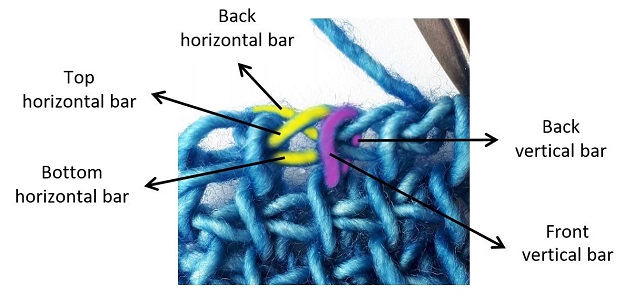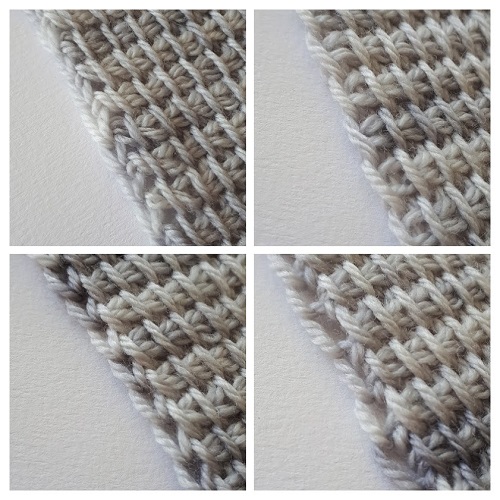What are the basic principles of Tunisian crochet?
Tunisian crochet (TC) is worked in 2 steps: the forward pass (FwdP) and the return pass (RetP). Unless otherwise specified in a design, you never turn your work. The front side is always facing you.
When working the FwdP, you pick up loops on your hook.
When working the RetP, you work loops off your hook.
A “full” row is made of a FwdP and a RetP.
Start with a foundation row
To start your work in Tunisian crochet, you need to cast on a given number of loops on your hook. Traditionally you start with a series of chains. Then you pick up a loop in each chain, starting in the second chain from the hook.
I have made a short video in French to show the basic steps to start a TC sample. I opted for chains, the traditional method, but keep in mind that you can start your TC work in many other ways (foundation single crochet or double or half double or in the edge of another piece of crocheted or knitted work).
A few key elements to keep in mind
The edge stitch at the end of the FwdP
You end a full FwdP by picking up a loop in the last stitch of the previous FwdP. This last stitch is the edge stitch that you create by working a chain at the start of the RetP in your previous row. This chain is the first yarn over that you pull through 1 loop at the start of a RetP.
So, to pick up your last loop at the end of the FwdP, make sure you insert your hook under the 2 threads of yarn on the side, then make a yarn over and pull up a loop. By inserting your hook under these 2 threads of yarn you get a neat edge at the end of your FwdP.
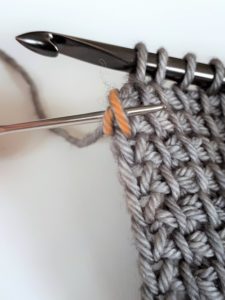
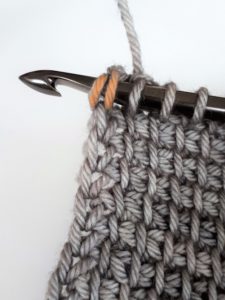
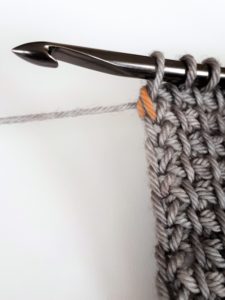
Edge stitch at the end of the FwdP
This being said, there are different ways to pick up the final loop at the end of a forward pass. See the blog article where I show what different edge stitches look like when you insert your hook under 1 or 2 strands of yarn and when you start your return pass with or without a chain stitch.
The edge stitch at the end of the RetP
You end a full RetP when there is only one loop left on your hook. Technically, this last loop on your hook is the first loop of the next FwdP. This last loop on your hook is in the alignment of the edge stitch at the start of your previous row. In other words, practically, when you start a new FwdP, make sure you do not insert your hook into the very first vertical bar on the edge of your work, but into the next vertical bar.
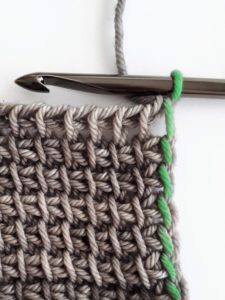
End with a traditional crochet row
When you want to finish your TC work, don’t cut the yarn at the end of the last RetP.
End your work with a row of single crochet (or any other traditional crochet stitch). So, practically, insert your hook the way you would to make a TC stitch (under the front vertical bar if you work in Tunisian simple stitches, for example), then make a yarn over and pick up a loop. Instead of keeping this loop on your hook, make a new yarn over and pull the yarn through the 2 loops on hook. You are left with only 1 loop on your hook. Keep on doing this until the end of the row. This way you get a neat edge that “closes” the last TC row.
Details of a basic stitch
The photo below shows the different elements that make a basic stitch.
In pink: the front and back vertical bars, picked up on the FwdP.
In yellow: the horizontal bars (top, bottom and back threads) of the chain made on the RetP, when the yarn goes through the first of the 2 loops on hook. The back horizontal bar is also called the back bump, the hump, the back ridge.
